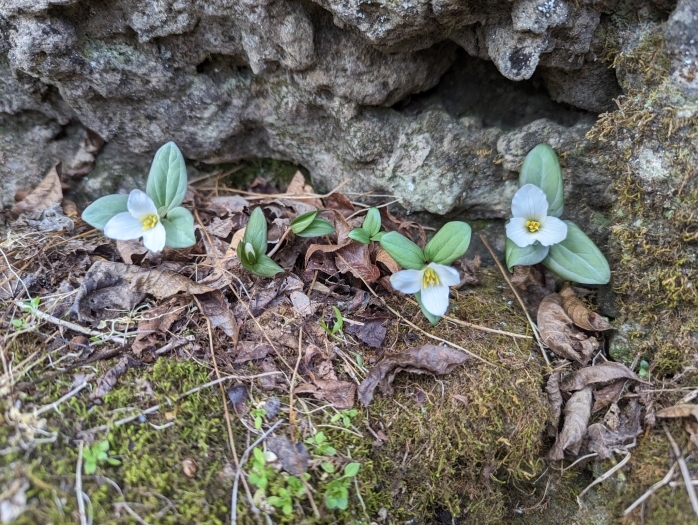Snow Trillium
(Trillium nivale)
Snow Trillium (Trillium nivale)
/
/

Elias
CC BY 4.0
Image By:
Elias
Recorded By:
Copyright:
CC BY 4.0
Copyright Notice:
Photo by: Elias | License Type: CC BY 4.0 | License URL: http://creativecommons.org/licenses/by/4.0/ | Rights Holder: Elias | Publisher: iNaturalist | Date Created: 2023-02-26T16:01:42-08:00 |













Estimated Native Range
Summary
Trillium nivale, commonly known as Snow Trillium or Dwarf White Trillium, is a perennial herb that is one of the earliest spring wildflowers in its native range. It is indigenous to rich, mesic deciduous woodlands and floodplain forests in the eastern and midwestern United States, particularly the Great Lakes States, the Ohio Valley, and the Upper Mississippi Valley, extending as far north as central Minnesota. This species typically grows to a diminutive height of up to 4 inches (10 cm) and is characterized by its solitary white flowers that bloom in late winter or early spring, often emerging while snow is still present. The flowers are quite showy despite the plant’s small size, and they are followed by a fruit that turns from green to a dark red as it matures.
Snow Trillium is valued for its early bloom time, adding interest to woodland gardens and native plant collections. It prefers partial to full shade and requires moist, well-drained soils that are rich in organic matter, particularly those with a calcareous (lime-containing) component. While it is not commonly used in large-scale cultivation due to its small size and specific habitat requirements, it is a cherished addition to shade gardens and naturalized areas. Gardeners should note that Snow Trillium can be slow to establish and may not tolerate transplanting well. It is also vulnerable to habitat destruction and should not be collected from the wild.CC BY-SA 4.0
Snow Trillium is valued for its early bloom time, adding interest to woodland gardens and native plant collections. It prefers partial to full shade and requires moist, well-drained soils that are rich in organic matter, particularly those with a calcareous (lime-containing) component. While it is not commonly used in large-scale cultivation due to its small size and specific habitat requirements, it is a cherished addition to shade gardens and naturalized areas. Gardeners should note that Snow Trillium can be slow to establish and may not tolerate transplanting well. It is also vulnerable to habitat destruction and should not be collected from the wild.CC BY-SA 4.0
Plant Description
- Plant Type: Herb, Bulb
- Height: 0.3-0.5 feet
- Width: 0.3-0.5 feet
- Growth Rate: Slow
- Flower Color: White
- Flowering Season: Spring
- Leaf Retention: Deciduous
Growth Requirements
- Sun: Part Shade, Full Shade
- Water: Medium
- Drainage: Medium
Common Uses
Border Plant, Low Maintenance
Natural Habitat
Rich, mesic deciduous woodlands and floodplain forests
Other Names
Common Names: Snow Trillium, Dwarf White Wakerobin, Snow Wakerobin
Scientific Names: , Trillium nivale,
GBIF Accepted Name: